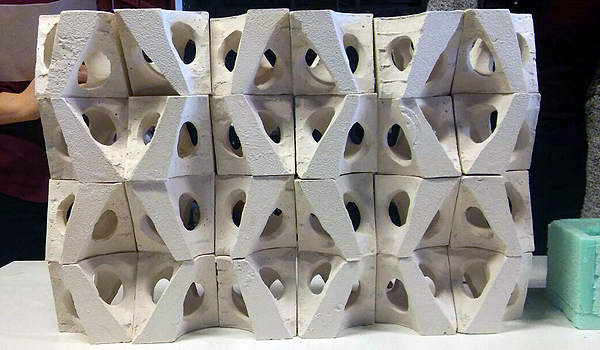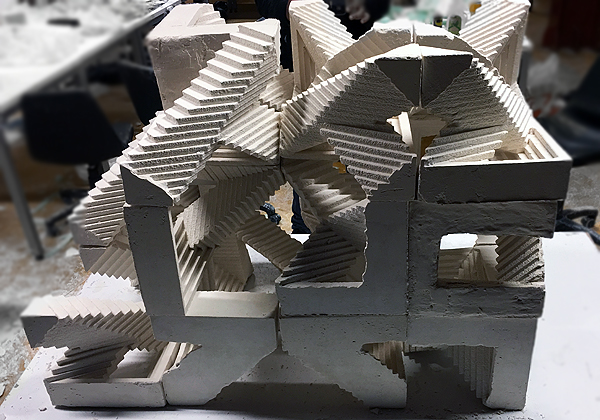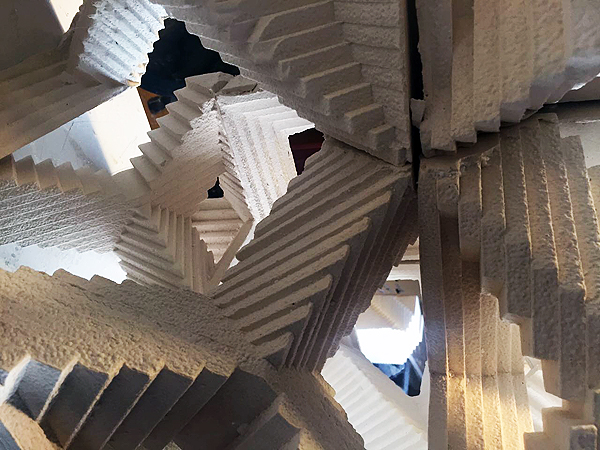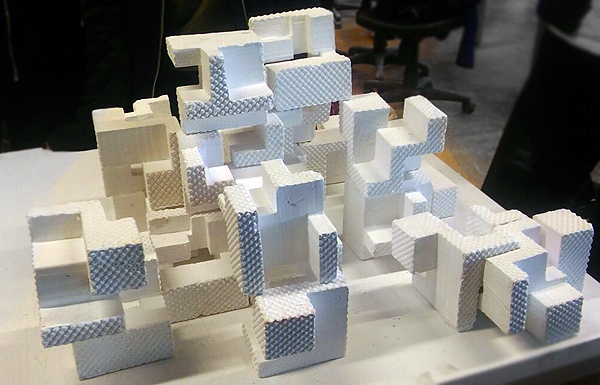Unity of Voids
In the last semester’s mid-term project of Computation-based Basic Design 2, we experimented with the casting method for studying solids and voids. Students worked in groups of four. First, they designed a set of components within a 10cm bounding cube. These cubes represent 1m3 on a 1:10 scale. After that, they multiplied them into a system of voids with a function for human use. They fabricated at least 24 pieces in the final 3d composition. David Umemoto’s Soma Cubes was an inspirational example for our students.
They used EPS or wood as the material for moulds. Designing a strategy for using the same mould multiple times was a good bonus. As a release agent, they used WD40, duck tape or liquid soap. The aim was to encourage them to think about the moulding and casting strategies as design inputs. Mould design and application are an important part of this study (not all forms are feasible to be fabricated with this method). We feel that this first experiment was very successful in terms of its educational purposes and final outcomes.

Students: Yaren Şirin, Gözde Ergül, Duru Kalınoğlu, Bengisu Yüksel


Students: Berkan Kaya, Mustafa Banzaroğlu, Gözde Akkoyun, İlker Yetik

Students: Dilruba Polat, Selin Yazıcı, Beritan Polat, Bilge Yılmaz
Tutors: Nur Gürbüz, Ece Çakır, Gizem Akgün and Tuğrul Yazar








